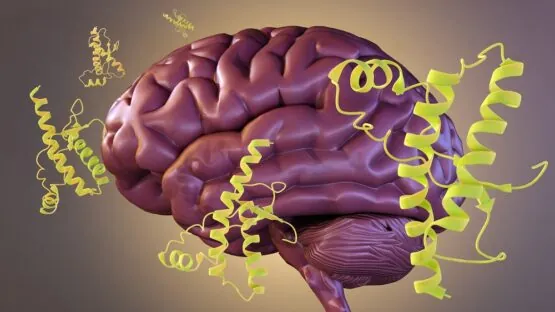In Nature Aging, researchers have described how an increase in the iron-associated protein ferritin light chain 1 (FTL1) is related to age-related cognitive impairment.
Impairment without cellular death
While neuronal loss is always a concern, age-related cognitive decline has been found to be primarily driven by other factors, such as synapse function [1]. Only a few factors have been identified as drivers of this process, most notably in the hippocampus, the region where new memories are formed. This region is particularly vulnerable to aging [2].
In order to discover these factors, the researchers performed a transcriptomic analysis on the neurons of 3-month-old and 18-month-old mice. Here, the researchers noted 28 genes that significantly increased in expression and 81 that significantly decreased. Unsurprisingly, many of these genes were related to synapse function.
Similarly, the researchers found 27 proteins that were upregulated in these mice’s brains with age and 19 that were decreased. One of these was FTL1, which has been found in previous work to be associated with cognitive decline [3].
Significant effects in both cells and mice
To test the impact of FTL1 on cognition, the researchers performed a variety of memory-related tests on both young and old mice. While the correlation was not perfect, mice of any age with more FTL1 were significantly more likely to perform worse on these tests.
The researchers then turned to causing neurons to express FTL1 by exposing them to a lentivirus. In vitro, mouse neurons that received this lentivirus had significantly fewer, and significantly shorter, synapses compared to the control group. This only changed how the cells function; there was no decrease in cellular viability from this exposure.
These findings were recapitulated in mice. Injecting the hippocampi of young mice with an FTL1-promoting lentivirus caused them to accumulate ferric iron in their neurons. There were decreases in molecules such as NR2A, which has been found to be necessary for synaptic plasticity [4], the ability of neurons to alter their states based on exposure to stimuli.
These changes were, as expected, mirrored by a change in behavior. For the control group, new objects were more interesting than familiar objects; for the mice overexpressing FTL1, there was no difference between the two. Similarly, in a related Y maze test, the FTL1-overexpressing mice did not have any increased interest in the novel path.
Targeting FTL1 provides benefits
Intrigued, the researchers then tried the reverse, using a lentivirus to interfere with the RNA that produces FTL1 first in vitro and then in vivo. In vitro, the results were the opposite as the FTL1-promoting lentivirus; neurons that expressed less FTL1 had significantly longer synapses in addition to increases in plasticity promoters. There was no evidence of cellular toxicity.
In vivo, when this anti-FTL1 lentivirus was introduced into the hippocampus, the results were striking; these older mice, which normally have little preference for novel objects and novel routes in the Y maze, regained some of their youthful cognitive abilities, significantly favoring the novel object more and trending towards favoring the novel Y maze route. Like in the cellular experiment, these mice had significant increases in molecules related to synaptic plasticity.
Metabolic underpinnings
An in-depth gene expression analysis found that these changes were strongly related to fundamental changes in metabolism, including mitochondrial dysfunction, as an increase in FTL1 led to a decrease in the mitochondrial energy currency ATP. Introducing NADH, a key molecule in energy generation, to these cells appeared to entirely mitigate the effects of increased FTL1 in vitro. These effects were recapitulated in vivo, with FTL1-overexpressing mice having significantly restored neuroplasticity and better cognitive performance when given NADH.
This is a mouse study, and the approaches used to test mice are normally not applicable for the treatment of human beings. However, as the researchers noted, “our data raise the exciting possibility that the beneficial effects of targeting neuronal FTL1 at old age may extend more broadly, beyond cognitive aging, to neurodegenerative disease conditions in older people.”
Literature
[1] Morrison, J. H., & Baxter, M. G. (2012). The ageing cortical synapse: hallmarks and implications for cognitive decline. Nature Reviews Neuroscience, 13(4), 240-250.
[2] Fan, X., Wheatley, E. G., & Villeda, S. A. (2017). Mechanisms of hippocampal aging and the potential for rejuvenation. Annual review of neuroscience, 40(1), 251-272.
[3] Zhang, N., Yu, X., Xie, J., & Xu, H. (2021). New insights into the role of ferritin in iron homeostasis and neurodegenerative diseases. Molecular neurobiology, 58(6), 2812-2823.
[4] Wheatley, E. G., Albarran, E., White, C. W., Bieri, G., Sanchez-Diaz, C., Pratt, K., … & Villeda, S. A. (2019). Neuronal O-GlcNAcylation improves cognitive function in the aged mouse brain. Current Biology, 29(20), 3359-3369.



